Nidularium innocentii
Click thumbnails for full size, scaled to a new window.
Nidularium innocentii
Species, Brazil.
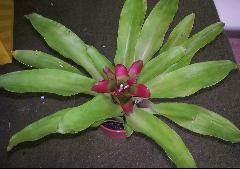
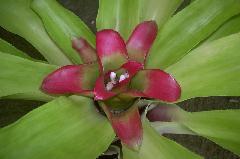
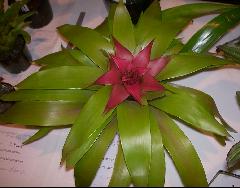
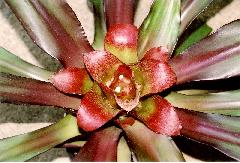
| Ian Hook, Sydney 02/04. |
Ian Hook, Sydney 05/04. |
Ken Woods, innocentii aff. |
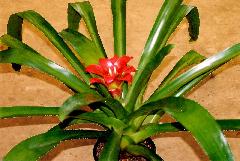
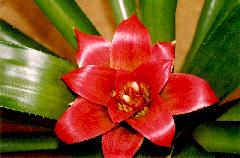
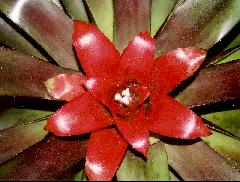
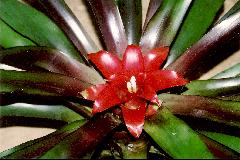
| Ken Woods, innocentii aff. Green Leaf |
Ken Woods, innocentii aff. Dark Leaf |
Nidularium innocentii var lineatum
Species, Brazil. Now treated as a cultivar, Nid. Lineatum Hort.
Leme in Nidularium - Bromeliads of the Atlantic Forest 144-153. 2000 included “The variety lineatum differs from the other varieties in its variegated leaves with white or yellowish lines. This trait is seen occasionally in the wild, as in specimen Leme 23-B, but it apparently reproduces only vegetatively, not sexually. Although this case is an exception to the method used here, I decided to maintain the validity of this variety due to its huge popularity as an ornamental and to the fact that it is already widely cultivated and has been for almost 90 years. LEAVES green with longitudinal white or yellowish lines, 1-3 mm wide. Description from Smith & Downs (1979), ‘Leaf-blades green with numerous longitudinal white lines; primary bracts red near the apex and green elsewhere’.
This variegate is not included in the World Checklist of selected Plant families.
Now treated here under ICNCP rules as a cultivar. Reg. Doc. 5/2016 by D Butcher.
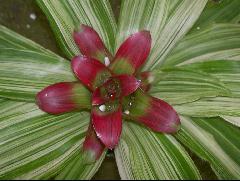
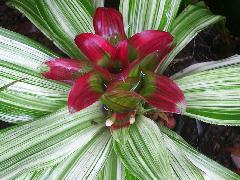

| Ian Hook, Sydney 02/04. |
Ian Hook, Sydney 03/04. |
Derek Butcher |
Nidularium innocentii var striatum
Species, Brazil/Australia. Now treated as a cultivar, Nid. Striatum Hort.
Only Nidularium innocentii is accepted in the World Checklist of selected Plant families whereas Leme in Nidularium- Brom. Atl. Forest 144-153. 2000 included var. striatum. Quote from the book: "The decision to maintain variety striatum as a valid taxon took into consideration the same arguments presented in relation to the previous variety. (lineatum) In this case, variety striatum has been cultivated for over 100 years and is one of the most popular taxa of this genus.” LEAVES green with white to yellow longitudinal stripes wider than 5 mm. Description from Smith & Downs Bromelioideae Monograph (1979), ‘Leaves, or at least their blades, green; blades marked with longitudinal white lines; primary bracts wholly or mostly red-purple.’ It was decided to register the name as a cultivar in the BCR. Reg. Doc. 5/2016 by D Butcher.
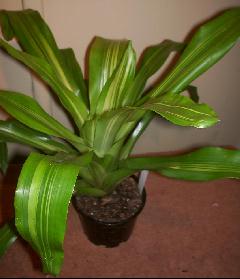

| Ian Hook, Sydney 01/04. |
Derek Butcher |
Nidularium innocentii – variegate forms to Bromeliad Cultivar Register by Butcher May 2016
Only Nidularium innocentii is accepted in the World Checklist of selected Plant families whereas Leme in Nidularium- Brom. Atl. Forest 144-153. 2000 included two variegates var. lineatum and var. striatum. I quote from the book:
“The variety lineatum differs from the other varieties in its variegated leaves with white or yellowish lines. This trait is seen occasionally in the wild, as in specimen Leme 23-B, but it apparently reproduces only vegetatively, not sexually. Although this case is an exception to the method used here, I decided to maintain the validity of this variety due to its huge popularity as an ornamental and to the fact that it is already widely cultivated and has been for almost 90 years.
Leaves - green with longitudinal white or yellowish lines, 1-3 mm wide.
Description from Smith & Downs (1979): ‘Leaf-blades green with numerous longitudinal white lines; primary bracts red near the apex and green elsewhere’.
The decision to maintain variety striatum as a valid taxon took into consideration the same arguments presented in relation to the previous variety. In this case, variety striatum has been cultivated for over 100 years and is one of the most popular taxa of this genus.”
LEAVES green with white to yellow longitudinal stripes wider than 5 mm.
Description from Smith & Downs (1979), ‘Leaves, or at least their blades, green; blades marked with longitudinal white lines; primary bracts wholly or mostly red-purple.’
Clearly Leme was uncomfortable in treating them under the ICN – International Code of Nomenclature (at that time ICBN – International Code of Botanical Nomenclature) rules and yet they would have been comfortable if named under the ICNCP (– International Code of Nomenclature of Cultivated Plants) rules. Here we have a dilemma. The ICNCP rules covering cultivated plants have been with us since 1953 but as far as I can trace are not acknowledged in the ICN rules BUT the ICN rules are acknowledged in the ICNCP rules. You would think that by now, botanists would accept that the ICN rules do not stand alone and that all naming must be linked to this code whether the plant originates in the wild or cultivation. We do know that this was Linnaeus’s intention long ago. A recent example under ‘Synonymies in Ananas’ by Coppens d’Eeckenbrugge and Govaerts, in Phytotaxa 239(3): 273-279. 2015 shows referral to both cultivated and wild plants and yet all are named as under the ICN system.
In a similar scenario we are seeing varietal status disappearing for variations in colour of petals. Here again botanists should not be shy in that the ICNCP can cover such differences quite adequately.
Such is the reluctance to concede that there is such a thing as the ICNCP rules the only reference list on the internet acknowledging this is the New Bromeliad Taxon list http://botu07.bio.uu.nl/bcg/taxonList.php
Therefore, I am adding the names Nidularium ‘Lineatum’ and Nidularium ‘Striatum’ to the Bromeliad Cultivar Register.
Nidularium innocentii var wittmackianum - new name = Nidularium longiflorum
Nidularium innocentii var. purpureum
This varietal name does NOT appear to be correct, but can sometimes be found for sale as such.
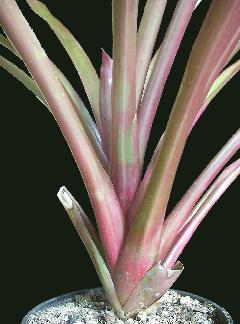
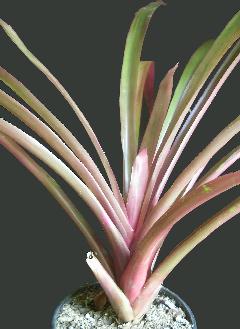
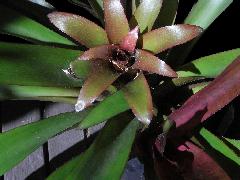
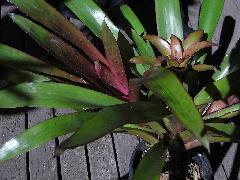
| Ian Hook, Sydney 03/07 from estate of Gordon Ramsey. |
Ian Hook, Sydney 08/09. |
Nidularium innocentii var. paxianum
Formerly listed here as Nidularium longiflorum
and before that, was called Nidularium innocentii var Wittmackianum
It appears the Sydney plants are mis-identified as longiflorum
Click var. paxianum to see images.
2021 Update - Now moved in with Nidularium innocentii var. innocentii
Updated 11/07/21














